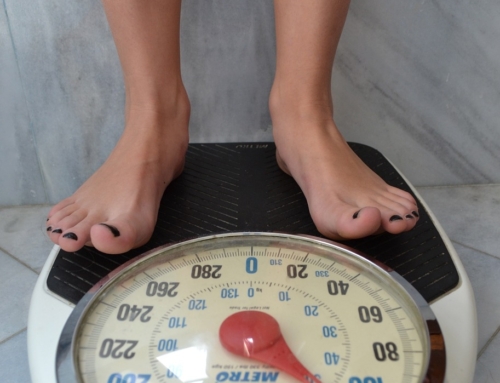One of the most important vitamin deficiencies I see on a routine basis is vitamin D. I have talked about it over the years and you usually think of vitamin D is just for bone loss. Today I want to share with you how very important vitamin D is for cell growth, reducing inflammation, brain function, gut function, cancer fighting, mood boosting as well as many other uses.
Vitamin D is actually a hormone that we make when our skin is exposed to ultraviolet light (sunlight) and has many roles such as these:
- Promotes calcium absorption in the gut which helps enable normal mineralization of the bone which helps with bone building.
- Helps with cell growth
- Helps with immune function
- Helps reduce inflammation
- Vitamin D also helps many genes regular signals for growth and cell death.
- Helps the tight junctions in the gut which keeps the gut from being leaky
- Mood enhancer: low levels contribute to the seasonal affective disorder. Symptoms of this include lower mood when it is dark and dreary outside.
But how much do you need?
What forms are best? You will be surprised about the prescription form…
What is the optimal level?
Why is your D level not coming up?
What are natural sources of D?
READ ON to learn all these answers…
First, let’s get some vitamin D basics because you hear a lot of different terms when you are really looking at this hormone. When the skin gets exposed to UVB light, the body will start to make a form of inactive vitamin D. It then gets carried to the liver and gets converted to 25-hydroxy vitamin D. The 25 hydroxy D then goes to the kidney where it becomes the active form 1,25 dihydroxy vitamin D also known as calcitriol. When the 1,25 dihydroxy form binds with the vitamin D receptor its’ actions are initiated. Enough of the science but this is important to understand when you look at how to measure the D levels.
Below you will find the FAQ about vitamin D.
How do I check my vitamin D levels?
There are two ways to measure vitamin D in blood:
- 25 hydroxy vitamin D is the primary form that we measure because it is more stable making it easier to get good values.
- 1,25 dihydroxy can also be measured but is not a good indicator of deficiency because these levels do not decrease until vitamin D deficiency is severe. It is also not very stable and has a short half-life which in lab terms means it is harder to measure consistently and accurately.
What is the goal of my blood test levels?
I use 25 hydroxy as my standard test. Lab values will indicate that 30 is “normal” but in my opinion I don’t believe it is optimal so I aim for a level of around 60-80 for most people. I don’t mind ranges in the 40’s during summer months if you are an outdoor type of person. If you have or have had cancer I aim for 80 and in some cases higher depending on the type of cancer. Really low vitamin D levels need to be worked up before beginning supplementation.
How much do I need to get my levels into ranges?
Most physicians refer to the RDA (recommended daily allowance) as the gold standard for a good vitamin D dose. It is important to realize how the RDA levels are set. We know that extremely low vitamin D levels lead to something called rickets or osteomalacia which literally means soft bones. Bones will become deformed (in young kids) or break (in older adults) with too low of vitamin D. Soft bones is not the only issue that is caused by low vitamin D levels as evidenced by all of D’s functions. The amount to keep people disease free of rickets is typically where the RDA levels start and if you go by this recommendation we need on average 600 IU of vitamin D a day. After measuring vitamin D levels in virtually every patient I see, I can tell you that there is an across the board deficiency and 600 IU isn’t even close to getting levels into what I consider a good range. If your vitamin D level is below the reference range on your lab then you need higher doses to get it up. Low normal D levels might require higher doses depending on what else is going on. For example, if I am working with an unhealthy gut or thyroid inflammation and there is a low normal vitamin D I will usually use higher doses of D to pull the level up quickly. Levels below 30 often require at least 5000 IU or even higher to pull it into optimal range. On average, a healthy person will require about 2000 IU daily. You do not want to take too much vitamin D without measuring your levels because it is a fat soluble vitamin which means we store the excess rather than pee it out.
What form of vitamin D should I take?
Traditional medicine uses the prescription form of 50,000 IU once a week. I don’t like this form because it is D2 and we need D3 in our bodies. We cannot utilize D2 easily and you can take it for months and the D level never really rises. I also don’t like the blast approach with that high of a dose of D because I think a continuous exposure is better in the long run especially when I am dealing with some significant medical issues like bone loss, depression, gut health, etc.
So, I recommend vitamin D3 in varying amounts from 2000 iu all the way up to 10,000 iu daily or every other day. I like K2 to be paired with the D3 in the same pill because when they started adding vitamin K the absorptions went way up. Vitamin D is best taken with a fatty meal for optimal absorption.
Are there any food sources of vitamin D?
There are some foods that have been fortified meaning vitamin D has been added to the final product. You will see vitamin D added to most milk for this reason but it only has 40 iu per serving. Other fortified sources include orange juice, some yogurt, and some cereals. Ranges of added D will vary based on the product. Vitamin D is found naturally in fish like salmon, tuna, sardines, and beef liver. The fish have the highest amounts getting up in the 500 IU ranges for some. Cod liver oil is a source of higher amounts of vitamin D often getting up in the 1000 IU ranges.
Can I get vitamin D from the sun?
The sun is the main source of vitamin D but there are a few things you need to know. Sunscreens with an SPF above 8 block the vitamin D producing UV rays. Exposure thru a window also does not allow for production of D, either. Therefore, you must have direct exposure with sunlight. In general, recommendations are for exposure of arms or legs for 10 minutes during peak sunlight hours (11-3pm) two-three times a week without sunscreen. Cloudy days have a 50% reduction in vitamin D producing rays so exposure times may need to be longer for the same effect. Obviously, the sun is stronger the closer you get to the equator so times for optimal exposure will vary depending on where you live. This is one reason people who originated near the equator have darker skin. This protected them from the strong sun exposure! We are truly created miraculously!
Who is at high risk of very low vitamin D levels?
There are several conditions that dangerously low vitamin D levels exist. Darker skin as mentioned above, breast fed infants (especially with dark skin mothers), inflammatory bowel disease, conditions that cause fat malabsorption, obesity, gastric bypass surgery, parathyroid issues, and people with limited sun exposure. I had a patient that was restricted from ever showing any skin and never had any vitamin D supplementation. By the time they were in middle age they had measurable loss of gray matter of the brain and significant change in cognitive function. Higher body fat doesn’t alter the way we synthesize vitamin D but it does provide more opportunity to store it which keeps it out of active circulation.
What if I can’t get my D level up?
Take a look at your brand, your dose and what other factors are contributing. The conditions that affect the gut or storage will all make it more difficult to get the levels in range but when you work on those areas the D level usually comes up. You also need to look at the other causes like parathyroid hormone because I have seen parathyroid tumors that are part of this equation. In some cases, supplementation with the active form 1,25 hydroxy (calcitriol) is indicated but this is prescription and should only be done with a supervising physician. One other source of D issues is hereditary vitamin D receptor issues. This is something you are born with and if you have an alteration in this receptor you really have to use optimal forms and doses.
Get your D level checked and start taking vitamin D now. We offer several different strengths if you are looking for a good brand.
To your health,
Laura









